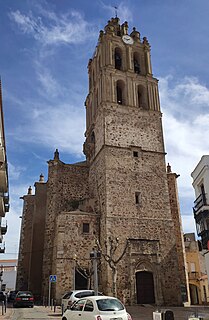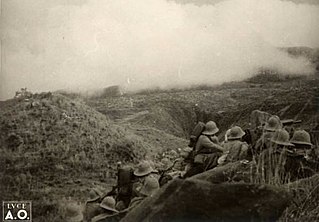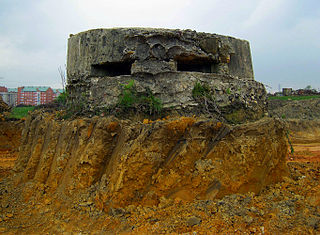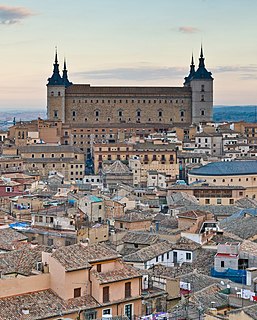 W
WCatalan coup d'etat (1936) was an unsuccessful takeover of power in autonomous Catalonia, planned by the independentist party Estat Català. The conspirators intended to declare total independence of Catalonia as a state neutral in the Spanish Civil War, and to marginalize all non-aligned political groupings, especially the Anarchists. They counted on party militias and Catalan army and security units, infiltrated by the Estat Català militants. The coup was planned in November, as the plotters assumed that the central Republican government, absorbed by the battle of Madrid, would not be able to take action. The plot failed because of the Anarchist counter-action, who exposed the scheme and some of its leaders. In pre-emptive strike Generalitat services detained a few of the conspirators; the others fled to France. Estat Català was sidelined, while CNT-FAI ensured its dominant position in Catalonia. The attempted coup remains a poorly researched and rather unknown episode; in historiography it is discussed against the background of Catalan fascism.
 W
WThe 1936 Naval Revolt or Mutiny on the Tagus ships was a mutiny in Portugal that occurred on 8 September 1936 aboard the aviso Afonso de Albuquerque and destroyer Dão. It was organized by the Revolutionary Organization of the Fleet, a left-wing group with links to the Portuguese Communist Party.
 W
WThe 1936–1939 Arab revolt in Palestine, later came to be known as The Great Revolt or The Great Palestinian Revolt, was a nationalist uprising by Palestinian Arabs in Mandatory Palestine against the British administration of the Palestine Mandate, demanding Arab independence and the end of the policy of open-ended Jewish immigration and land purchases with the stated goal of establishing a "Jewish National Home". The dissent was directly influenced by the Qassamite rebellion, following the killing of Sheikh Izz ad-Din al-Qassam in 1935, as well as the declaration by Hajj Amin al-Husseini of 16 May 1936 as 'Palestine Day' and calling for a General Strike. The revolt was branded by many in the Jewish Yishuv as "immoral and terroristic", often comparing it to fascism and Nazism. Ben Gurion, however, described Arab causes as fear of growing Jewish economic power, opposition to mass Jewish immigration and fear of the English identification with Zionism.
 W
WThe Battle of Almendralejo was a battle and massacre in Almendralejo, Spain, in August 1936, during the first stages of the Spanish Civil War.
 W
WThe Battle of Amba Aradam was a battle fought on the northern front of what was known as the Second Italo-Abyssinian War. This battle consisted of attacks and counterattacks by Italian forces under Marshal of Italy Pietro Badoglio and Ethiopian forces under Ras Mulugeta Yeggazu. This battle was primarily fought in the area around Amba Aradam which included most of Enderta Province.
 W
WThe Campaign of Gipuzkoa was part of the Spanish Civil War, where the Nationalist Army conquered the northern province of Gipuzkoa, held by the Republic.
 W
WThe Battle of Cerro Muriano took place during the Spanish Civil War in 1936.
 W
WThe Convoy de la Victoria was a Spanish naval battle on 5 August 1936 in the Strait of Gibraltar during the Spanish Civil War, between the escort of a Nationalist convoy and the Republican Navy destroyer Alcalá Galiano.
 W
WThe February 26 Incident was an attempted coup d'état in the Empire of Japan on 26 February 1936. It was organized by a group of young Imperial Japanese Army (IJA) officers with the goal of purging the government and military leadership of their factional rivals and ideological opponents.
 W
WThe Battle of Ganale Doria was a battle in 1936 during the Second Italo-Abyssinian War. It was fought on the "southern front". The battle consisted largely of air attacks by the Italian Royal Air Force, under the command of General Rodolfo Graziani, against an advancing and then withdrawing Ethiopian army under Ras Desta Damtu. The battle was primarily fought in the area along the Genale Doria River valley between Dolo and Negele Boran.
 W
WThe Siege of Gijón, one of the first actions in the Spanish Civil War, saw the anarchist militia crushing a small Nationalist garrison in Gijón, between July 19 and August 16, 1936. The militia - nominally fighting in defense of the Republic - laid siege to the Simancas barracks in the city of Gijón. These were defended by about 180 soldiers and Guardia Civil officers who had risen in support of General Franco's rebellion and seized the post for the Nationalists. The battle was remarkable for its viciousness and the stubbornness of the besieged.
 W
WThe Battle of Guadarrama was a battle involving troops loyal to the Second Spanish Republic in the Guadarrama Range at the beginning of the Spanish Civil War.
 W
WThe Battle of Irún was the critical battle of the Campaign of Gipuzkoa prior to the War in the North, during the Spanish Civil War. The Nationalist Army, under Alfonso Beorlegui, captured the city of Irún cutting off the northern provinces of Gipuzkoa, Biscay, Santander, and Asturias from their source of arms and support in France.
 W
WThe July 1936 military uprising in Barcelona was a military uprising in Barcelona, the capital and largest city of Catalonia, Spain on 19 July 1936 which contributed to the start of the Spanish Civil War. Most of the Spanish Army officers in the city supported the coup, but the Civil Guard, the Assault Guard and the Mossos d'Esquadra remained loyal to the government. Furthermore, Barcelona was one of the strongholds of the anarchist union, the Confederación Nacional del Trabajo (CNT). The rebel troops were defeated after bloody combat.
 W
WThe July 1936 military uprising in Melilla occurred at the start of the Spanish Civil War. The rebels seized the main garrisons of the Spanish Army in Africa and by 18 July had crushed the resistance of the army officers loyal to the Republican government. The supporters of the Second Spanish Republic were detained or shot.
 W
WThe siege of the Loyola barracks was a siege and uprising at the military barracks in the Loyola neighborhood of San Sebastián, Spain, on 21 July 1936. It was part of the Spanish coup of July 1936 against the Second Spanish Republic, which led to the start of the Spanish Civil War.
 W
WThe Battle of Majorca, also known as the Majorca Landings, was an amphibious landing of Republican forces early in the Spanish Civil War aimed at driving the Nationalists from Majorca and reclaiming the island for the Republic. After some initial tactical success, the expedition, commanded by Captain Alberto Bayo, ended in failure when the Nationalists counterattacked with ground troops and massively superior air power and drove the Republicans into the sea. So confident were the Republicans in their prediction of victory they optimistically called the operation "la reconquista de Mallorca" - "the reconquest of Majorca".
 W
WThe March of the Iron Will was an Italian Fascist propaganda event staged from 26 April to 5 May 1936, during the final days of the Second Italo-Ethiopian War. The goal of the march was to capture the Ethiopian capital in a show of force. An Italian mechanized column under the command of Pietro Badoglio, Marshal of Italy, advanced from the town of Dessie to take Addis Ababa. The march covered a distance of approximately 200 miles (320 km).
 W
WThe siege of the Montaña barracks was the two-day siege which marked the initial failure of the July 1936 uprising against the Second Spanish Republic in Madrid, on 18–20 July 1936, at the start of the Spanish Civil War. The bulk of the security forces in Madrid remained loyal to the government, and supported by workers' militias, crushed the uprising.
 W
WThe Siege of Oviedo was a siege in the Spanish Civil War that lasted from July 19 until October 16, 1936. The town garrison, under the command of Colonel Antonio Aranda Mata, declared for the Nationalist uprising and held out until relieved by a Nationalist force.
 W
WThe Pacification of Manchukuo was a Japanese anti-insurgency campaign during the Second Sino-Japanese War to suppress any armed resistance to the newly established puppet state of Manchukuo from various anti-Japanese volunteer armies in occupied Manchuria and later the Communist Northeast Anti-Japanese United Army. The operations were carried out by the Imperial Japanese Kwantung Army and the collaborationist forces of the Manchukuo government from March 1932 until 1942, and resulted in a Japanese victory.
 W
WThe remilitarisation of the Rhineland began on 7 March 1936, when German military forces entered the Rhineland, in direct contravention of the Treaty of Versailles and of the Locarno Treaties.
 W
WThe Second Italo-Ethiopian War, also referred to as the Second Italo-Abyssinian War, was a war of aggression which was fought between Italy and Ethiopia from October 1935 to February 1937. It is seen as an example of the expansionist policy that characterized the Axis powers and the ineffectiveness of the League of Nations before the outbreak of World War II.
 W
WThe Battle of Seseña was an ill-fated Republican-Soviet assault on the Nationalist stronghold of Seseña, near Toledo, 30 km south of Madrid in October 1936 during the Spanish Civil War. After the fall of Talavera de la Reina and Toledo in September 1936, the Nationalist troops pushed towards Madrid and in October they were 30 km from the city. The Republican government which had received new Soviet weapons decided to launch a counteroffensive in order to stop the Nationalist offensive at Seseña. The attack failed and the Nationalists resumed their advance towards Madrid. The battle is notable for being the first time that tank warfare was seen in the Spanish War and for the use by Nationalist troops of Molotov cocktails against Soviet T-26 tanks.
 W
WThe July 1936 military uprising in Seville was a military uprising in Seville, Spain on 18 July 1936, which contributed to the start of the Spanish Civil War. The 17–18 July coup failed in the Andalusian cities of Malaga, Jaen and Huelva, but succeeded in Cordoba, Granada, Cadiz and in the capital city, Seville. The city's garrison, led by Queipo de Llano, occupied the city and carried out a bloody repression. In August 1936, the Nationalists started their advance towards Madrid from Seville.
 W
WThe Battle of Shire was a battle fought on the northern front of what was known as the Second Italo-Abyssinian War. This battle consisted of attacks and counterattacks by Italian forces under Marshal of Italy Pietro Badoglio and Ethiopian forces under Ras Imru Haile Selassie. This battle was primarily fought in the Shire area of Ethiopia.
 W
WThe Siege of the Alcázar was a highly symbolic Nationalist victory in Toledo in the opening stages of the Spanish Civil War. The Alcázar of Toledo was held by a variety of military forces in favor of the Nationalist uprising. Militias of the parties in the Popular Front began their siege on July 21, 1936. The siege ended on September 27 with the arrival of the Army of Africa under Francisco Franco.
 W
WThe Battle of the Sierra Guadalupe, also known as the Tagus Campaign, was a continuation of the Nationalist Army's race north toward Madrid in the early stages of the Spanish Civil War. In mid-late August 1936, the three Regulares columns of General Yagüe's Army of Africa dashed through the Sierra de Guadalupe Mountains, also known as Sierra de Villuercas, in central Spain and forded across the Tagus River, capturing several towns and routing the Republicans in a succession of rapid advances.
 W
WThe Spanish Revolution was a workers' social revolution that began during the outbreak of the Spanish Civil War in 1936 and resulted in the widespread implementation of anarchist and more broadly libertarian socialist organizational principles throughout various portions of the country for two to three years, primarily Catalonia, Aragon, Andalusia, and parts of the Valencian Community. Much of the economy of Spain was put under worker control; in anarchist strongholds like Catalonia, the figure was as high as 75%. Factories were run through worker committees, and agrarian areas became collectivized and run as libertarian socialist communes. Many small businesses like hotels, barber shops, and restaurants were also collectivized and managed by their workers.
 W
WThe Suiyuan campaign was an attempt by the Inner Mongolian Army and Grand Han Righteous Army, two forces founded and supported by Imperial Japan, to take control of the Suiyuan province from the Republic of China. The attempted invasion occurred in 1936, shortly before the Second Sino-Japanese War. The Japanese government denied taking part in the operation, but the Inner Mongolians and the other collaborationist Chinese troops received air support from Japanese planes and were assisted by the Imperial Japanese Army. The entire operation was overseen by Japanese staff officers. The campaign was unsuccessful, mostly due to lack of training and low morale among the Mongolians and other collaborators. The defense of Suiyuan, one of the first major successes of China's National Revolutionary Army over Japanese-supported forces, greatly improved Chinese morale.
 W
WThe Second Battle of Tembien was a battle fought on the northern front of what was known as the Second Italo-Abyssinian War. This battle consisted of attacks by Italian forces under Marshal Pietro Badoglio on Ethiopian forces under Ras Kassa Haile Darge and Ras Seyoum Mangasha. This battle, which resulted in a decisive defeat of Ethiopian forces, was primarily fought in the area around the Tembien Province. The battle is notable for the large-scale use of mustard gas by the Italians.